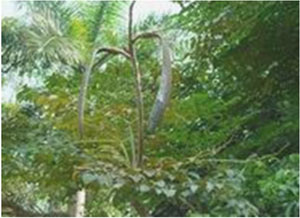
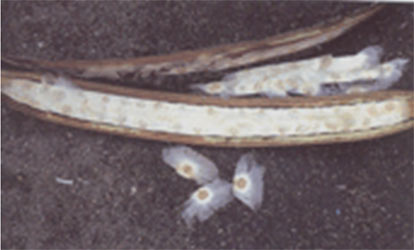
Oroxylum pod in the trees (left) and opened showing seeds (right).
OROXYLUM
Oroxylum refers to the seeds from the tree Oroxylum indicum, commonly called the Tree of Damocles. The tree has been named after an incident depicted in an ancient story by Cicero, in which there is a sword hanging over the head of Damocles, from which we get the well-known reference to the "sword of Damocles." This tree has long, fruit pods that hang down from the branches, looking like dangling swords. Within these pods are the seeds that come to be used in Chinese herbal medicine; when the pod bursts open the seeds flutter to the ground, often traveling some distance, looking like butterflies. Thus, the seeds, with their white, paper-thin "wings" are known to the Chinese as muhudie, or the tree butterfly (mu= tree; hudie = butterfly).


The traditional use of this herb is for moistening the lungs to control dry cough due to heat; restoring normal voice in cases of hoarseness or irritation; resolving liver qi stagnation and improving the flow of qi; and harmonizing the stomach. It is also used topically, to help treatment of persistent skin ulcers. Oroxylum is a relatively rarely used herb, and it is not found in many of the Materia Medica books available in English.
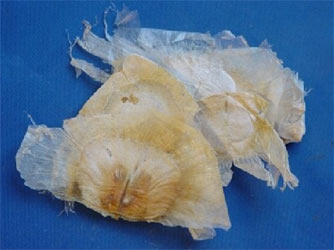
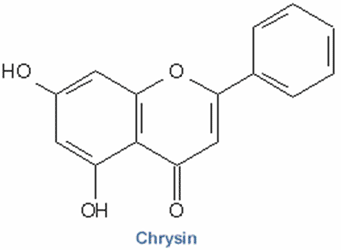
The seed contains oils and flavonoids (1, 2). One of the main flavonoids, chrysin, has been the subject of much study; among its potential applications is to alleviate anxiety (related to alleviating liver qi stagnation); chrysin is one of the main active components in the popular sedative plant passionflower (Passiflora coerulea). Oroxylum seeds also contains the flavonoid baicalein and its derivatives; this compound, usually obtained from Scutellaria baicalensis (named after this particular species, which also contains chrysin as one of its flavonoids), has been shown to have several useful applications for lung diseases. Chrysin, baicalein, and the other flavonoids in oroxylum have anti-inflammatory and anti-allergy effects, though the herb and its flavonoids may need to be used in high doses to get those responses.
Oroxylum root bark is the part used in Ayurvedic medicine, administered as an astringent, bitter tonic, stomachic, and anodyne. It is included in famous tonic formulations, such as Chyawanprash.
May 2006


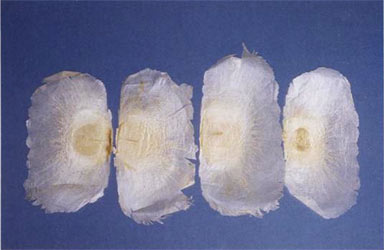
Top: Oroxylum's "trumpet flowers" with background of falling butterfly-like seeds.
Middle: Oroxylum's seed pod hanging like the "sword of Damocles." Bottom: Close up of the Oroxylum seeds.